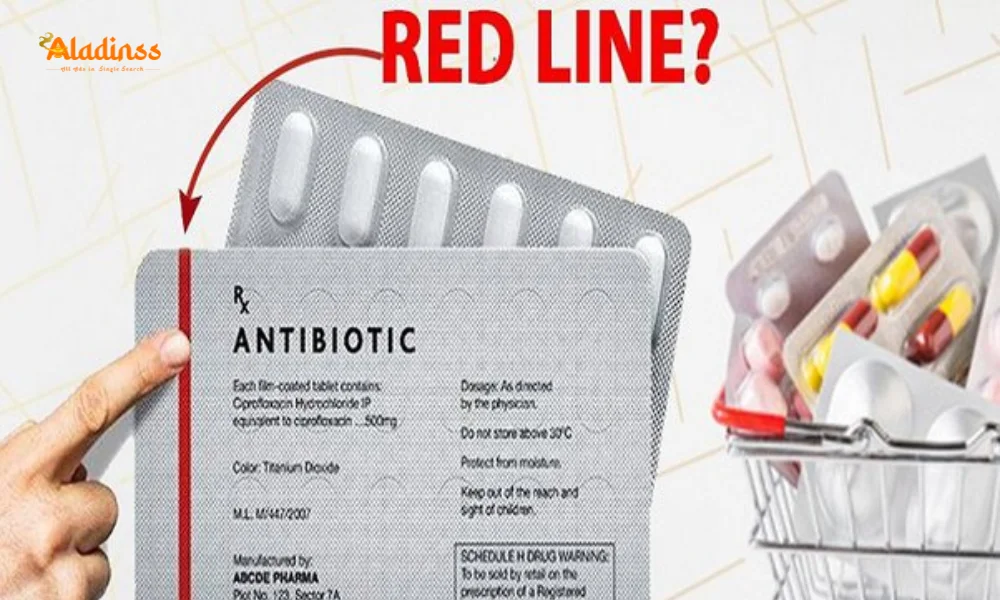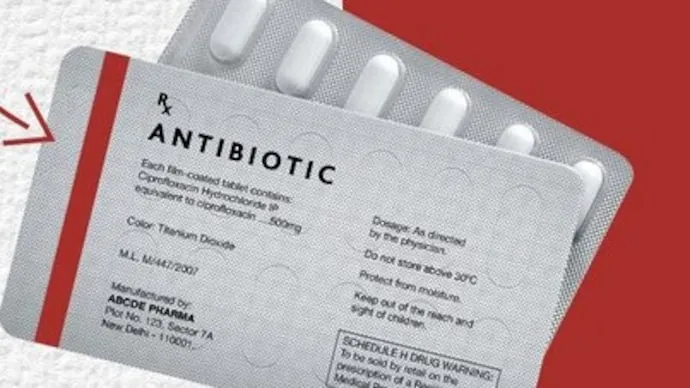Deadly Mistake Red Stripe Drugs Can Kill Without Rx Doctor

Warning! Doctor Reveals Why Red-Striped Medicines Can Kill Without Prescription
That thin red vertical stripe on your medicine strip isn’t just packaging design-it’s a life-saving government warning. In India, red-striped medicines are classified under Schedule H and Schedule H1 drugs, meaning they are prescription-only and must never be taken without a doctor’s approval. Public health expert Dr Jagadish Hiremath has issued a stern alert: self-medicating with these tablets can lead to organ damage, antibiotic resistance, and even death.
“The red line is not decoration-it’s a regulatory mandate under the Drugs and Cosmetics Act,” Dr Hiremath told The Indian Express. “It signals to both pharmacists and patients that this drug can cause severe side effects if misused. Over 7,000 Indians die annually due to wrong dosage or drug interactions-many involving red-striped medicines.”

What Does the Red Stripe Actually Mean?
Introduced by the Central Drugs Standard Control Organisation (CDSCO), the red stripe serves as a visual alert system. While blue-striped or unmarked packs indicate over-the-counter (OTC) drugs like paracetamol or antacids, a red vertical line means the medicine falls under restricted categories. Pharmacies are legally bound to demand a valid prescription before dispensing these drugs.
“This isn’t optional-it’s law,” emphasizes Dr Hiremath. “The red stripe protects you from drug misuse, overdose, and dangerous interactions. Ignoring it is like driving without a seatbelt.” The warning applies nationwide, with strict penalties for pharmacies violating the rule.
Everyday Red-Striped Medicines You Must Never Self-Medicate
Many commonly used drugs carry the red stripe. Dr Hiremath lists the most frequent offenders:
- Antibiotics: Azithromycin, Amoxicillin, Cefixime, Levofloxacin
- Steroids: Prednisolone, Dexamethasone, Betamethasone
- Anti-anxiety & Sleep Aids: Alprazolam (Xanax), Diazepam, Zolpidem
- Painkillers: Tramadol, Tapentadol, Diclofenac combinations
- Cough Syrups: Codeine-based, Dextromethorphan high-dose
- Hormonal Drugs: Thyroxine, Oral contraceptives (certain brands)
“These are routine medications in hospitals, but deadly in wrong hands,” warns the doctor. “A simple fever tablet with hidden steroids can suppress symptoms while allowing infection to spread.”
Hidden Dangers: Side Effects That Can Ruin Your Health
Self-medicating with red-striped drugs triggers a cascade of risks. Dr Hiremath breaks down the science:
- Antibiotic Resistance: Incomplete courses create superbugs-India reports over 58,000 newborn deaths yearly due to resistant infections (WHO).
- Steroid Damage: Long-term use causes Cushing’s syndrome, diabetes, bone weakness, and adrenal failure.
- Anti-anxiety Addiction: Alprazolam dependence develops in 2–4 weeks, leading to seizures upon withdrawal.
- Kidney & Liver Failure: Painkillers like Diclofenac cause acute renal injury in 1 in 5 chronic users.
- Heart Risks: Codeine syrups trigger arrhythmias and respiratory depression.
“People think ‘it worked last time, so it’s safe’-that’s the biggest myth,” says Dr Hiremath. “Your body changes. A drug that helped once can harm now due to age, weight, or new conditions.”
Why Dosage & Duration Matter More Than the Drug Itself
Even the “right” medicine becomes poison without proper guidance. For example:
- Azithromycin: 3-day pack for throat infection vs. 5-day for typhoid-wrong duration fails treatment.
- Prednisolone: Must be tapered slowly-sudden stop causes adrenal crisis.
- Alprazolam: Night-only use prevents daytime drowsiness and dependence.
“Dosage isn’t one-size-fits-all,” explains Dr Hiremath. “A 50kg woman needs half the antibiotic dose of a 90kg man. Only a doctor calculates this safely.”
The Silent Epidemic: 7,000+ Deaths from Medication Errors
India’s Pharmacovigilance Programme records over 1.5 lakh adverse drug reactions annually. Of these, 5–7% prove fatal-translating to 7,500–10,000 preventable deaths. The top culprits? Red-striped drugs bought without prescription.
A 2024 study in The Lancet Regional Health found that 62% of urban Indians self-medicate with antibiotics, and 48% reuse old prescriptions. Rural areas fare worse due to pharmacy laxity and doctor shortages.
Blue Stripe vs Red Stripe: Know Before You Swallow
To avoid confusion, remember:
- No stripe / Blue stripe → OTC (safe for self-use in recommended doses)
- Red vertical stripe → Prescription only (Schedule H/H1)
- Red box + RX symbol → Narcotics (Schedule X-extra strict)
“Teach your family: Red means STOP and ask doctor,” advises Dr Hiremath. “Children mimic parents-show them the right way.”
Long-Term Organ Damage: The Price of Ignoring the Red Line
Chronic misuse leaves permanent scars:
- Kidneys: NSAID painkillers → Chronic Kidney Disease (CKD)
- Liver: Paracetamol overdose → Acute Liver Failure
- Heart: Steroids → Hypertension, Cardiomyopathy
- Brain: Benzodiazepines → Memory loss, Dementia risk
- Bones: Long-term steroids → Osteoporosis, Fractures
“Damage creeps silently,” warns the expert. “A 30-year-old taking alprazolam nightly for stress may face liver cirrhosis by 45-all because he ignored the red stripe.”
Myths That Fuel the Misuse of Red-Striped Drugs
Dr Hiremath debunks dangerous beliefs:
- Myth: “If it helped my neighbor, it’ll help me” → Truth: Different diagnosis, different drug.
- Myth: “Higher dose = faster recovery” → Truth: Causes toxicity.
- Myth: “Ayurvedic = always safe” → Truth: Many contain hidden steroids (red-striped).
- Myth: “Pharmacist is a doctor” → Truth: Cannot diagnose or prescribe.
What To Do If You’ve Already Taken Red-Striped Medicine?
Stop immediately and:
- Visit a doctor with the medicine pack
- Get blood tests (LFT, KFT, CBC) if used >1 week
- Never abruptly stop steroids or benzodiazepines-taper under guidance
- Report side effects to PvPI helpline: 1800 180 3024
Government Crackdown: Will Red Stripe Rules Get Stricter?
The Ministry of Health is planning digital prescription mandates by 2026. Future plans include:
- E-prescriptions via Ayushman Bharat Digital Mission
- QR codes on red-striped packs linking to warnings
- Heavy fines (₹5–10 lakh) for pharmacies selling without prescription
- Public awareness via TV, radio, and school curricula
“Technology will make misuse nearly impossible,” says a CDSCO official. “But awareness starts at home-check the stripe before you swallow.”
Safe Alternatives: OTC Drugs You Can Trust
For minor ailments, stick to Schedule K or unmarked OTC drugs:
- Paracetamol (Dolo 650) – fever, pain
- Crocin Cold & Flu – common cold
- Digene – acidity
- ORS – dehydration
- Band-Aids, Dettol – first aid
“These have safety margins built in,” assures Dr Hiremath. “But even OTC drugs need label reading-never exceed 3 days without consulting a doctor.”
Final Verdict: Red Stripe = Red Alert
The message is clear: never take red-striped medicines without a prescription. One wrong pill can trigger a lifetime of health battles. As Dr Jagadish Hiremath concludes, “Your life is not an experiment. The red line isn’t a suggestion-it’s a boundary between safety and disaster.”
Next time you reach for a tablet, pause. Look for the stripe. If it’s red, put it down and pick up the phone-call your doctor. Your organs will thank you.
Comment / Reply From
No comments yet. Be the first to comment!






